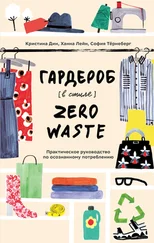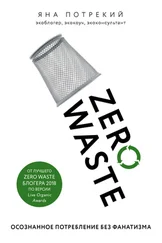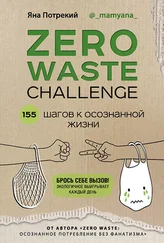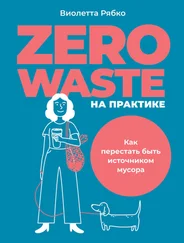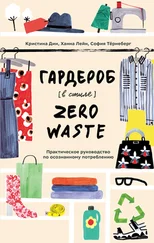What you choose to eat is your personal choice. There are many ways to plan out meals that sustain your body and health. In addition, there are social and cultural factors that influence your choices. However, simply omitting all animal products isn’t a magic bullet to the complex environmental and social issues we face as a nation. In regard to farming and ranching methods, there’s room for both conventional and organic practices. Farmers and ranchers are continually working to improve as they determine what best suits their land and local ecosystem.
With proper management and strategies for storing carbon, some theorize that a balanced use of land for livestock and crops going forward can work and is the most energy-efficient way to produce food.
Bringing It Home: Deciphering Package Icons and Labels
Food labels have never had more information on them, nor been more confusing. Food labels include a standardized Nutrition Facts Panel and list of ingredients that is regulated by the FDA. It also can include a lot of labeling or icons on the front of the package. Most of these front-of-package claims are not regulated and mostly serve as a marketing tactic.
Health claims are regulated, but other claims aren’t. For instance, the term natural on a food label has no defined meaning nor is it regulated by the FDA. The term plant-based sometimes suggests that a product is improved because it’s replaced meat with plants. There are too many unregulated and misleading terms to cover here but there are a few I want to highlight.
 Green marketing is a form of eco-labeling that states a product is sustainably sourced, developed, or packaged. Companies are usually required to follow guidelines to make these claims, and this comes at a cost. Certification terms such as Sustainably Grown Certified, USDA Organic, and Demeter Biodynamic are well defined and verified by third-party organizations. However, don’t be fooled by “greenwashing” label tactics. Greenwashing is a form of green marketing that makes false or unsupported claims to make the product appear more sustainable or healthy for the planet. Front of package labeling like “earth-friendly,” “natural,” or “eco-green” is simply a marketing ploy and has no defined meaning.
Green marketing is a form of eco-labeling that states a product is sustainably sourced, developed, or packaged. Companies are usually required to follow guidelines to make these claims, and this comes at a cost. Certification terms such as Sustainably Grown Certified, USDA Organic, and Demeter Biodynamic are well defined and verified by third-party organizations. However, don’t be fooled by “greenwashing” label tactics. Greenwashing is a form of green marketing that makes false or unsupported claims to make the product appear more sustainable or healthy for the planet. Front of package labeling like “earth-friendly,” “natural,” or “eco-green” is simply a marketing ploy and has no defined meaning.
The organic label you see on products at the grocery store is a certification of the USDA Agricultural Marketing Service (see Figure 2-3). Food companies pay to use the label. The label, or seal, indicates that the food was produced through the approved methods as defined by the USDA. In terms of science, all food is organic, as it contains carbon matter. So what’s all the fuss about?
The USDA defines organic as crops that haven’t used synthetic pesticides, herbicides, or fertilizers and are free from any genetic engineering or ionizing radiation. (Keep in mind that organic crops can still be sprayed with approved natural pesticides. Just because a substance is natural, however, doesn’t mean that it still can’t be harmful.)
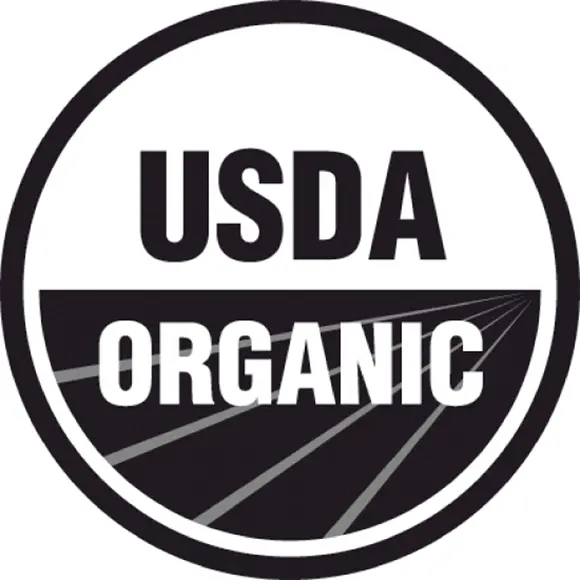
Courtesy of U.S. Department of Agriculture
FIGURE 2-3:USDA Organic seal used to certify food produced organically.
In terms of animals, organic meat is from livestock that is fed organic feed and raised without routine antibiotic use. The USDA Organic label sometimes adds to the costs of farming practices and the packaging of food products. This cost is also passed to the consumer, often resulting in higher prices than conventional products. But are they all-around better for you? Nutritionally, there’s no significant difference in organic-certified food versus nonorganic-certified food. Organic farming isn’t better or worse than conventional farming; it’s simply a method of farming (see the earlier section “ Organic farming is superior” for more).
 Like the Certified Organic label, the Non-GMO Project Verified label is a paid labeling verification. This label can be misleading because products are often labeled, even though they wouldn’t ever contain any ingredient that has a GM counterpart.
Like the Certified Organic label, the Non-GMO Project Verified label is a paid labeling verification. This label can be misleading because products are often labeled, even though they wouldn’t ever contain any ingredient that has a GM counterpart.
There’s been a rise in “free-from” labeling on packaged foods over the past decade. This in part may be due to increases in food allergy and sensitivities, but it’s often a marketing tactic. As consumers adopt various styles of diets, they may be looking to avoid certain ingredients. For example, a person with celiac disease needs to avoid gluten (although many consumers choose to avoid gluten for no medical reason).
Sometimes the free-from ingredient labeling is useful (such as when someone with an allergy needs to identify certain ingredients in foods). Other times, these labels are misleading. It’s confusing when a label includes a free-from claim for an ingredient that wouldn’t normally be in the food product anyway — for instance, when orange juice is labeled “dairy-free” or “GMO-free.” Orange juice never contained either dairy or any genetically modified ingredients. The simple notion that a product is “free-from” also makes you think that it’s somehow better, or that the ingredient it is free from is “bad” or was removed.
Some food labels are free from so many different things that it may make you wonder, what is it actually? With the trend for gluten-free and dairy-free diets, these claims continue to cover packages. Labels may also include GMO-free, vegan, plant-based, egg-free, or nut-free. Some are just ridiculous, such as gluten-free water or GMO-free gin. Most of these labels are added for marketing purposes and don’t impact the health and safety of the food. But what do all of these free-from labels really mean?
Gluten-free: This voluntary labeling regulated by the FDA means that the food bearing the claim doesn’t contain gluten or any gluten-containing grain.
Dairy-free: While the FDA doesn’t allow false claims on packages, there’s no regulatory definition for the term dairy-free. Ideally, a food with this label wouldn’t contain any dairy products.
GMO-free: This is sometimes misleading when there’s no GMO counterpart for the ingredient in question. For instance, it’s one thing to compare GMO soybean to non-GM soy. But because there’s no GM wheat, it makes no sense to label a wheat product “non-GMO.”
Egg-free: Products containing eggs must be labeled “contains eggs,” but there’s no regulation for the egg-free claim.
Nut-free: This is also an unregulated package claim. While nuts may not be an ingredient in the product, this claim doesn’t mean the product doesn’t contain the allergen, or was not processed in a factory that processes nuts.
Vegan: While this term is clearly defined to mean a product doesn’t contain any ingredients of animal origin (including honey and gelatin), it isn’t regulated by the FDA.
 The FDA requires companies to list ingredients on packaged foods and beverages. Certain foods or substances that cause common allergies have more specific labeling requirements. According to the Food Allergen Labeling and Consumer Protection Act of 2004, products containing any of the nine common food allergens — milk, egg, peanut, tree nuts, wheat, soy, sesame, fish, and shellfish — must be labeled. If you have a food allergy, you need to read labels carefully and avoid that food or ingredient. If in doubt, it’s best to read the package ingredient list for the allergens. Consult with an allergen specialist to determine the various names of ingredients related to common allergens.
The FDA requires companies to list ingredients on packaged foods and beverages. Certain foods or substances that cause common allergies have more specific labeling requirements. According to the Food Allergen Labeling and Consumer Protection Act of 2004, products containing any of the nine common food allergens — milk, egg, peanut, tree nuts, wheat, soy, sesame, fish, and shellfish — must be labeled. If you have a food allergy, you need to read labels carefully and avoid that food or ingredient. If in doubt, it’s best to read the package ingredient list for the allergens. Consult with an allergen specialist to determine the various names of ingredients related to common allergens.
Читать дальше

 Green marketing is a form of eco-labeling that states a product is sustainably sourced, developed, or packaged. Companies are usually required to follow guidelines to make these claims, and this comes at a cost. Certification terms such as Sustainably Grown Certified, USDA Organic, and Demeter Biodynamic are well defined and verified by third-party organizations. However, don’t be fooled by “greenwashing” label tactics. Greenwashing is a form of green marketing that makes false or unsupported claims to make the product appear more sustainable or healthy for the planet. Front of package labeling like “earth-friendly,” “natural,” or “eco-green” is simply a marketing ploy and has no defined meaning.
Green marketing is a form of eco-labeling that states a product is sustainably sourced, developed, or packaged. Companies are usually required to follow guidelines to make these claims, and this comes at a cost. Certification terms such as Sustainably Grown Certified, USDA Organic, and Demeter Biodynamic are well defined and verified by third-party organizations. However, don’t be fooled by “greenwashing” label tactics. Greenwashing is a form of green marketing that makes false or unsupported claims to make the product appear more sustainable or healthy for the planet. Front of package labeling like “earth-friendly,” “natural,” or “eco-green” is simply a marketing ploy and has no defined meaning.
 Like the Certified Organic label, the Non-GMO Project Verified label is a paid labeling verification. This label can be misleading because products are often labeled, even though they wouldn’t ever contain any ingredient that has a GM counterpart.
Like the Certified Organic label, the Non-GMO Project Verified label is a paid labeling verification. This label can be misleading because products are often labeled, even though they wouldn’t ever contain any ingredient that has a GM counterpart.